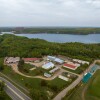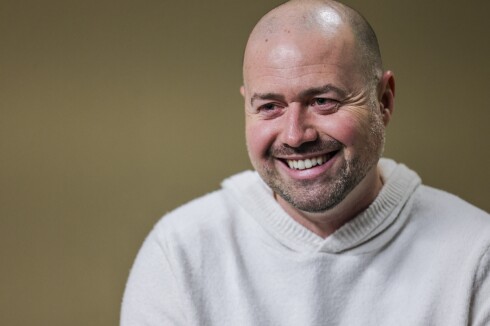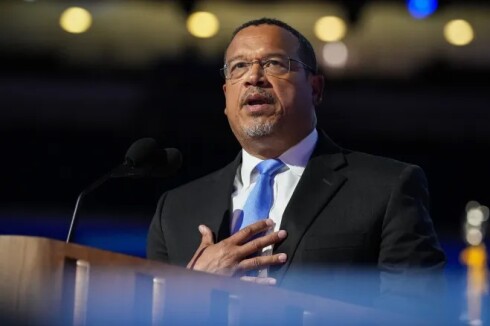DULUTH — What was expected to be a celebratory federal grant announcement by the University of Minnesota's Natural Resources Research Institute was infused with uncertainty Tuesday morning thanks to a memo issued by President Donald Trump the previous day.
The NRRI had been poised to share news of a pending $1.3 million grant from the U.S. Department of Energy to explore the construction of a first-of-its-kind “green iron” plant.
ADVERTISEMENT
The anticipated grant from the Office of Industrial Efficiency and Decarbonization would allow the NRRI and various partners to assess the "economic and technical feasibility" of constructing a 1-gigawatt hydrogen-based plant. If successful, leaders say it would “represent a path toward a secure, low-carbon domestic supply of iron for the U.S. steel industry” and serve as a model for other carbon-intensive industries.
A White House memo released Monday threw support for the project and many others into question. The document called for a pause on all federal grants and loans to allow for further review. In particular, it singled out certain types of programs for scrutiny, including those that appear to promote "DEI (Diversity, Equity and Inclusion), 'woke' gender ideology and the Green New Deal."
While that memo calling for an immediate blanket freeze on spending was later rescinded, administration officials said the president still intends to reconsider the list of proposed projects, with an eye toward halting support for those that do not meet his standards.

NRRI Executive Director Rolf Weberg said staff are aware of the directive from the U.S. Office of Management and Budget.
"However, a big part of the conversation we've been having for the past year to 1 1/2 years is to engage early and often with the tribes, the industries, the businesses across the state of Minnesota," Weberg said. "So, this conversation about globally competitive industry has strong bipartisan community support because of the work we've put in, in addition to a fairly diverse funding portfolio that does include funding from the federal government.
"So, we remain confident that as we move through the conversations that will take place over the next three to five weeks, as things clear up," Weberg said, "that we will emerge with a strong program that puts Minnesota iron at the front of a drive to make our industries more competitive globally."
NRRI Director of External Engagement Jamie Alexander said it's a "smart thing to do" for the region and the U.S.
ADVERTISEMENT
She pointed to the prospect of increased jobs, the economic benefits of domestic steel production and the national security interests involved in developing a strong, viable and largely independent steel industry.
“This green iron project will be the first of its kind, putting the U.S. on a trajectory to maintain global competitiveness as the demand for green iron and other critical materials grows,” Weberg said in a statement. “This ambitious effort will create a secure domestic supply chain for steel production and decrease our dependence on international materials.”
The award is the first project approved under the Midwest Industrial Transformation Initiative to “transition bedrock American industries to a new era of global leadership,” according to a news release.
The venture is a collaboration between NRRI; the Great Plains Institute, a Minneapolis-based nonpartisan, nonprofit organization seeking to accelerate the transition to net-zero carbon emissions; and the University of Minnesota’s West Central Research and Outreach Center in Morris; along with various industry and labor representatives, community and government organizations, and tribal entities.
Weberg said the total project cost is expected to land in the vicinity of $4 million to $5 million, with the federal government expected to cover upward of one-third of the tab.
While some budget adjustments are to be expected, Weberg said there's not a whole lot of wiggle room.
"The cost is the cost. This is a very complex, expensive project that includes industrial customers but also community partners, as well as other partners who need to work together," he said, noting that the year-long timeline laid out for the study is fairly aggressive.
ADVERTISEMENT
“As the nation’s primary source of iron ore, the Mesabi Iron Range is poised for green iron innovations,” said Ida Rukavina, commissioner of the Department of Iron Range Resources and Rehabilitation. “Our region’s abundant natural resources have long been a driver of national prosperity, and we’re ready to lead in these critical industry transformations.”
To provide a sense of scale for the project, a 500-megawatt plant would be large enough to power a city about the size of Minneapolis. And current Northland mine operations typically consume about 300-500 megawatts of power, according to Weberg.
"So, this is a significant amount of power, which is another reason why the feasibility study is very important," he said, explaining that it raises significant power grid challenges as well.
The new energy source could enable more Range mines to begin processing direct-reduced iron products with wider markets than the blast furnaces most now supply. For perspective, blast furnaces account for about 30% of domestic steel production. DRI products can be used to feed the more prevalent electric arc furnaces that account for most of the nation's steel production today.
The proposed feasibility study is just a leaping-off point for the cost of making hydrogen-powered mine-processing operations a reality. The proposed project should help to firm up those expenses, but Weberg said the iron-processing costs alone are likely to require an investment of $800 million to $1.5 billion.
"That's why a feasibility study is really a foundational thing, because no company or companies can justifiably commit to an investment of that magnitude without a really strong feasibility study," Weberg said.
The other side of the equation would likely involve an equal if not greater investment in hydrogen generation and storage capacities, he explained.
ADVERTISEMENT
The goal of the initiative is to establish a global model in Minnesota for four critical sectors — iron/steel, cement/concrete, ammonia/fertilizers and liquid fuels — by replacing fossil fuels and feedstocks with renewable energy and electrolytic hydrogen. By co-locating different types of industrial operations, researchers hope to boost efficiency and make positive use of waste byproducts, such as heat.

Weberg suggested mining operations on the Range reasonably could be coupled with cement/concrete production that, in turn, would support the production of renewable biomass and liquid e-fuels.
A news release noted the project has already received “significant financial and in-kind support” from the state, industry partners and foundations, while public engagement efforts are underway to “align the project with the priorities of utilities, Tribes, communities, government agencies and union organizations.
“This will increase domestic production of energy and materials,” the news release said, “enhance global competitiveness of essential industries, support national security, reduce emissions and create new jobs and skilled workforce development.”
This story was updated at 1:15 p.m. Jan. 28, with quotes from industry experts and a new graphic, and at 4:30 p.m. Jan. 29, with additional information on the status of federal funding for the project. It was originally posted at 8 a.m. Jan. 28.
















